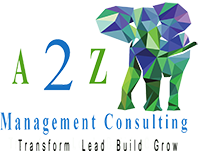Content
Personal physiology and environment are also important factors for meth withdrawal. People with substance use disorder (or family history) are likely to experience more challenges in withdrawing from methamphetamine. Attempting to quit alone or within an environment with addictive triggers can also make the process more challenging. For many, it is physiological symptoms — anhedonia and the resultant depression — that cause relapse as they seek relief from the emotional distress. The psychological dependence resulting from prolonged meth use is powerful, so the person in withdrawal will often experience an intense craving for the drug. Personalized medicine approaches are gaining traction in addiction treatment.
in 4 meth users relapse – outcomes could improve if treatments considered the drug’s effect on impulsive behaviour
Quality programs provide comprehensive assessment identifying all mental health conditions requiring attention. Unlike some substances, methamphetamine doesn’t typically produce life-threatening physical withdrawal symptoms. However, the psychological and emotional aspects of withdrawal can be extremely challenging, potentially including severe depression, anxiety, fatigue, disturbed sleep, and intense drug cravings. Methamphetamine differs from many other substances in how it affects brain function and structure. The drug triggers an overwhelming flood of dopamine—far more intense than natural rewards or even other Halfway house drugs—creating profound changes in the brain’s reward system. These alterations contribute to the particularly challenging nature of meth addiction treatment.
It’s like a bouncer for your brain, blocking the euphoric effects of the drug. Some studies have found that naltrexone can reduce meth use and cravings, particularly in individuals with a specific genetic makeup. Remember, there is hope for recovery and rebuilding life after meth addiction. With determination, support, and the right treatment approach, it’s possible to break free from the chains of addiction and reclaim a life of health, happiness, and purpose.
Whether you are struggling with addiction, mental health or both, our expert team is here to guide you every step of the way. Don’t https://ecosoberhouse.com/ wait— reach out today to take the first step toward taking control of your life. Treatment for a meth addiction is difficult because the drug is so powerful. However, recovery is possible with determination and the right support. One of the most debilitating symptoms of meth detox is severe dysphoria, also known as depression.
Outpatient Programming
The overdose epidemic in the United States is a worsening and evolving public health crisis, characterized by four distinct waves. Initially propelled by deaths involving prescription opioids, the epidemic later saw a surge in heroin-related overdoses, followed by a devastating wave fueled by synthetic opioids like fentanyl 1, 2. The latest wave has been driven by polysubstance use and the involvement of stimulants (such as powder and crack cocaine and methamphetamine) in overdose deaths 3, 4. While the overdose crisis has been framed as a “white problem” over much of the past two decades, recent data have documented significant increases in overdose deaths among non-Hispanic Black and Hispanic populations 5. The Salvation Army’s Bridge Programme, a well-known drug rehabilitation programme with 20 centres throughout the country, is a good example.
Understanding the Goals of Psychotherapy: A Guide for Those Seeking Depression Therapy Services
There has been substantial research and several tests have been developed to measure and define impulsivity. However, the effect of stimulant drugs such as methamphetamine on impulsivity remains unclear. Some people who use methamphetamine undergo the detox process at home. If the home environment is a triggering space, particularly one in which meth was or is highly prevalent, it is not advisable to attempt detox at home. It is also not advisable to try home detox if you have a dual diagnosis or co-occurring mental condition. Some of the most common symptoms are fatigue, depression, anxiety and increased appetite.
They’re there to ensure safety and comfort as the body purges itself of the drug. Another effective method is contingency management, which uses rewards to encourage positive behavior changes. For example, individuals might receive incentives for staying drug-free. These types of therapies can significantly help someone battling addiction.
Therapies for Meth Abuse
The goal is to clear meth from the body and safely manage withdrawal symptoms that arise when the brain is deprived of meth. A medical detox program can help ease this transition and address any symptoms that a person experiences. There are different lengths of meth treatment programs available to suit different recovery needs. People can also opt for specialty meth rehab centers, such as dual diagnosis treatment programs for methamphetamine addiction, luxury meth rehabs, or meth addiction rehabs for couples or Veterans. The high prevalence of co-occurring mental health conditions among those with methamphetamine addiction necessitates integrated treatment addressing both issues simultaneously.
Here I highlight important work being done at NIDA and other news related to the science of drug use and addiction. With trained eyes on your progress around the clock, you will be able to largely avoid any dangerous complications. Meth works by increasing the amount of dopamine — the neurotransmitter that controls feelings of pleasure — in the brain. When the drug is removed, dopamine drops below natural levels, and the resulting loss of enjoyment is distressing. The CAGE-AID questionnaire is a self-guided assessment that can be used as a first step in determining whether your substance use habits are cause for concern.
Virtual reality exposure therapy, smartphone apps for relapse prevention, and teletherapy options are expanding access to treatment and support. These tools can provide real-time interventions and continuous support, bridging the gap between clinical sessions. As our understanding of addiction and the brain evolves, so too do our treatment methods.
- Additionally, there should be a doctor, nurse, friend or family member present for the withdrawal process.
- It is often preferable for people with meth addiction depending on insurance coverage, job constraints and other limitations.
- With trained eyes on your progress around the clock, you will be able to largely avoid any dangerous complications.
- We then gave the rats gradually increasing doses of methamphetamine and observed how their choices changed.
Since the effects of the drug start and fade quickly, people often take repeated doses in what is known as a binge and crash pattern. In fact, some people go on a “run,” which involves bingeing on the drug every few hours for several days at a time, without food or sleep. Your doctor can assess your overall health by performing a physical exam.
Study researchers performed four urine drug screens at the end of each stage of these two stages. Participants were considered to have “responded” to treatment if at least three of four urine screens were negative. These self-help groups are managed and run by other people who are working through recovery themselves.

